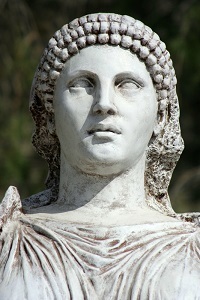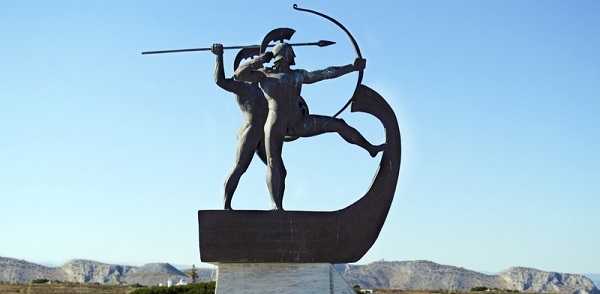

 Artemisia I of Caria was an Ancient Greek queen who is praised for her courage. She is well known through the writings of Herodotus.
Artemisia I of Caria was an Ancient Greek queen who is praised for her courage. She is well known through the writings of Herodotus.
In the fifth century BCE, Artemisia I of Caria served as both a monarch and a naval commander in Ancient Greece. Her most notable accomplishment is her participation in the Battle of Salamis, where she sided with the Persian Empire against the Greek city-states. She was able to establish her reputation as a fearless fighter and esteemed tactician as a result.
Artemisia was the daughter of satrap Halicarnassus, Lygdamis I, and her mother belonged to the island of Crete. She inherited the throne after her husband’s death. It is believed that she inherited her naval skills from her father and was well-known for her strategic thinking and ability to command her ships effectively.
The name Artemisia is derived from the Greek goddess Artemis, who was known as the goddess of hunting, wilderness, childbirth, and virginity. Artemis was also a symbol of power and leadership and was often depicted as a fierce and independent woman. This association with the goddess Artemis may have been intended to convey Artemisia's power and leadership as a queen and naval commander.
Artemisia commanded a ship in the Persian navy during the Battle of Salamis in 480 BCE. Despite fighting against her fellow Greeks, she reportedly distinguished herself in battle and earned the respect of the Persian king Xerxes. Artemisia advised Xerxes to use smaller ships to attack at night instead of engaging in a direct battle with the Greek fleet. This strategy demonstrated her strategic thinking and her ability to understand the strengths and weaknesses of her enemy. With the victory of the Greeks, they successfully escaped the fate of turning into slaves to Persia. The end of the Battle of Salamis stopped the Persians; invasion of Europe.

Artemisia fled to Asia Minor with the Persian fleet following the Persian disaster at Salamis. She led Xerxes's sons who weren't his biological children to safety. This is the last time she is mentioned in the past. According to certain historians, she kept on ruling as queen of Caria while still remaining separate from the Persian Empire. She is thought to have remained influential in the area, and one of the few kingdoms that escaped Persian rule was hers. She is also credited with developing Caria's naval might, which aided the region's trade and commerce.
The ancient historian Herodotus wrote positively of Artemisia's intelligence and bravery, but other sources depict her as a traitor to Greece. Her actions during the Battle of Salamis remain debated among historians. Some historians have praised her as a strategic thinker, while others have criticised her for fighting against her fellow Greeks. However, it is essential to note that her kingdom was a vassal state of the Persian Empire, and she was fighting to protect her interests.
There is no concrete proof of Artemisia's demise. However, authors like Photius note that she committed suicide, while there is another belief that she drowned herself in the grief of rejection from prince Dardanus. Ancient literature and art preserved Artemisia's memory, with certain representations showing her as a strong and revered figurehead. Herodotus (a historian) wrote extensively on the Persian Wars, praising Artemisia for her bravery and wit.
However, not all ancient sources depicted Artemisia positively. Some sources depict her as a traitor to Greece for fighting against her fellow Greeks. Her actions during the Battle of Salamis remain debated among historians. In those sources, she was depicted as a cunning and treacherous figure.
In ancient Greece, Artemisia I of Caria was a strong naval leader and queen who made a significant contribution to the Battle of Salamis. She played a significant role in the Battle of Salamis, demonstrating her abilities as a formidable fighter and astute thinker. She also demonstrates her strength and resolve as a leader through her deeds as the monarch of Caria. Historians and academics continue to recall and discuss Artemisia's legacy despite the absence of historical documents.
Q1. Was Artemisia I a pirate?
Ans. There has been confusion between Artemisia I of Caria and the Anatolian queen known as Artemisia II. Artemisia I of Caria was not a pirate. Writers often refer to Artemisia II of Anatolia as a pirate.
Q2. Is there any depiction of Artemisia in modern culture?
Ans. Artemisia has been depicted in various forms of modern culture such as films, books, and video games. Her role as a powerful and strategic leader continues to inspire and fascinate people today.
Q3. Was Artemisia a traitor to Greece?
Ans. Opinions about Artemisia's loyalty to Greece are divided among historians. Some sources depict her as a traitor for fighting against her fellow Greeks, while others see her actions as defending her kingdom and interests as a vassal state of the Persian Empire.